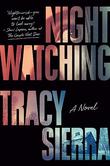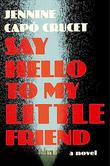
by Beth Macy ‧ RELEASE DATE: Aug. 7, 2018
An urgent, eye-opening look at a problem that promises to grow much worse in the face of inaction and indifference.
Awards & Accolades
Our Verdict

GET IT
Kirkus Reviews'
Best Books Of 2018
Kirkus Prize
finalist
New York Times Bestseller
Harrowing travels through the land of the hypermedicated, courtesy of hopelessness, poverty, and large pharmaceutical companies.
A huge number of Americans, many of them poor rural whites, have died in the last couple of decades of what one Princeton researcher has called “diseases of despair,” including alcoholism, suicide, and drug overdoses caused by the hopeless sense that there’s a lack of anything better to do. Roanoke-based investigative journalist Macy (Truevine: Two Brothers, a Kidnapping, and a Mother’s Quest: A True Story of the Jim Crow South, 2016, etc.) locates one key killer—the opioid epidemic—in the heart of Appalachia and other out-of-the-way places dependent on outmoded industries, bypassed economically and culturally, and without any political power to speak of, “hollows and towns and fishing villages where the nearest rehab facility was likely to be hours from home.” Prisons are much closer. Macy’s purview centers on the I-81 corridor that runs along the Appalachians from eastern Tennessee north, where opioid abuse first rose to epidemic levels. She establishes a bleak pattern of high school football stars and good students who are caught in a spiral: They suffer some pain, receive prescriptions for powerful medications thanks to a pharmaceutical industry with powerful lobbying and sales arms (“If a doctor was already prescribing lots of Percocet and Vicodin, a rep was sent out to deliver a pitch about OxyContin’s potency and longer-lasting action”), and often wind up dead or in jail, broke and broken by a system that is easy to game. Interestingly, Macy adds, “almost to a person, the addicted twentysomethings I met had taken attention-deficit medication as children.” Following her survey of the devastation wrought in the coal and Rust belts, the author concludes with a call to arms for a “New Deal for the Drug Addicted,” a constituency that it’s all too easy to write off even as their number climbs.
An urgent, eye-opening look at a problem that promises to grow much worse in the face of inaction and indifference.Pub Date: Aug. 7, 2018
ISBN: 978-0-316-55124-3
Page Count: 384
Publisher: Little, Brown
Review Posted Online: May 9, 2018
Kirkus Reviews Issue: June 1, 2018
Share your opinion of this book
More About This Book
PROFILES
BOOK TO SCREEN
BOOK TO SCREEN

by Paul Kalanithi ‧ RELEASE DATE: Jan. 19, 2016
A moving meditation on mortality by a gifted writer whose dual perspectives of physician and patient provide a singular...
Awards & Accolades
Likes

18
Our Verdict

GET IT
Google Rating
Kirkus Reviews'
Best Books Of 2016
New York Times Bestseller
Pulitzer Prize Finalist
A neurosurgeon with a passion for literature tragically finds his perfect subject after his diagnosis of terminal lung cancer.
Writing isn’t brain surgery, but it’s rare when someone adept at the latter is also so accomplished at the former. Searching for meaning and purpose in his life, Kalanithi pursued a doctorate in literature and had felt certain that he wouldn’t enter the field of medicine, in which his father and other members of his family excelled. “But I couldn’t let go of the question,” he writes, after realizing that his goals “didn’t quite fit in an English department.” “Where did biology, morality, literature and philosophy intersect?” So he decided to set aside his doctoral dissertation and belatedly prepare for medical school, which “would allow me a chance to find answers that are not in books, to find a different sort of sublime, to forge relationships with the suffering, and to keep following the question of what makes human life meaningful, even in the face of death and decay.” The author’s empathy undoubtedly made him an exceptional doctor, and the precision of his prose—as well as the moral purpose underscoring it—suggests that he could have written a good book on any subject he chose. Part of what makes this book so essential is the fact that it was written under a death sentence following the diagnosis that upended his life, just as he was preparing to end his residency and attract offers at the top of his profession. Kalanithi learned he might have 10 years to live or perhaps five. Should he return to neurosurgery (he could and did), or should he write (he also did)? Should he and his wife have a baby? They did, eight months before he died, which was less than two years after the original diagnosis. “The fact of death is unsettling,” he understates. “Yet there is no other way to live.”
A moving meditation on mortality by a gifted writer whose dual perspectives of physician and patient provide a singular clarity.Pub Date: Jan. 19, 2016
ISBN: 978-0-8129-8840-6
Page Count: 248
Publisher: Random House
Review Posted Online: Sept. 29, 2015
Kirkus Reviews Issue: Oct. 15, 2015
Share your opinion of this book

by Abhijit V. Banerjee & Esther Duflo ‧ RELEASE DATE: Nov. 12, 2019
Occasionally wonky but overall a good case for how the dismal science can make the world less—well, dismal.
“Quality of life means more than just consumption”: Two MIT economists urge that a smarter, more politically aware economics be brought to bear on social issues.
It’s no secret, write Banerjee and Duflo (co-authors: Poor Economics: A Radical Rethinking of the Way To Fight Global Poverty, 2011), that “we seem to have fallen on hard times.” Immigration, trade, inequality, and taxation problems present themselves daily, and they seem to be intractable. Economics can be put to use in figuring out these big-issue questions. Data can be adduced, for example, to answer the question of whether immigration tends to suppress wages. The answer: “There is no evidence low-skilled migration to rich countries drives wage and employment down for the natives.” In fact, it opens up opportunities for those natives by freeing them to look for better work. The problem becomes thornier when it comes to the matter of free trade; as the authors observe, “left-behind people live in left-behind places,” which explains why regional poverty descended on Appalachia when so many manufacturing jobs left for China in the age of globalism, leaving behind not just left-behind people but also people ripe for exploitation by nationalist politicians. The authors add, interestingly, that the same thing occurred in parts of Germany, Spain, and Norway that fell victim to the “China shock.” In what they call a “slightly technical aside,” they build a case for addressing trade issues not with trade wars but with consumption taxes: “It makes no sense to ask agricultural workers to lose their jobs just so steelworkers can keep theirs, which is what tariffs accomplish.” Policymakers might want to consider such counsel, especially when it is coupled with the observation that free trade benefits workers in poor countries but punishes workers in rich ones.
Occasionally wonky but overall a good case for how the dismal science can make the world less—well, dismal.Pub Date: Nov. 12, 2019
ISBN: 978-1-61039-950-0
Page Count: 432
Publisher: PublicAffairs
Review Posted Online: Aug. 28, 2019
Kirkus Reviews Issue: Sept. 15, 2019
Share your opinion of this book
More About This Book
SEEN & HEARD
© Copyright 2024 Kirkus Media LLC. All Rights Reserved.
Hey there, book lover.
We’re glad you found a book that interests you!
We can’t wait for you to join Kirkus!
It’s free and takes less than 10 seconds!
Already have an account? Log in.
OR
Trouble signing in? Retrieve credentials.
Welcome Back!
OR
Trouble signing in? Retrieve credentials.
Don’t fret. We’ll find you.





